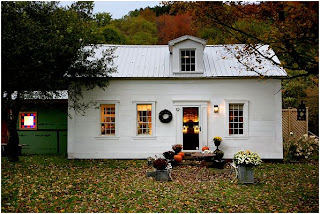
Planted on 90 acres of Catskill farm and woodland, this 18th century farmhouse is a study of geographical and anatomical proportions where clutter isn’t the exception – it’s the rule.
Meet Sean Scherer, an artist turned store owner, whose home was the subject of a guided tour in the New York Times on Thursday, Oct. 8.

The artist, who moved upstate after 9/11 paralyzed the New York City art scene, said he had waited his entire life to refurbish and expand the 1,000 square foot, Cape-style farmhouse from the 1840s.
He rebuilt parts of the house by hand, having also designed an addition that would triple the house's size. During shopping visits to the Brooke’s Variety, Scherer uncovered a selection of crude farm furniture with what he said were “clean, modern lines.”
“I don’t care about the pedigree,” he told The New York Times. “I like the fact that the objects were made for a specific purpose.”

Much like designers mix high with low, Scherer pairs the rudimentary wares with the unexpected: medical illustrations, anatomical models and even Soviet agitprop posters from Moscow in the late 1980’s.
The combination can be as eclectic as a collection of curvilinear ceramics on a tabletop, underneath an image showing a cross-section of the human head and an Industrial Revolution diagram of pulleys. Or it can be as simple as a series of mirrors hanging over a bed with a quilted duvet.
The artful clutter (as The New York Times called it) grew from years of years of collecting, since he first moved to the area.

One thing is for sure: The clutter in every corner and on any wall was no mishap. Carefully staged and beautifully staged is this artist’s approach to decorating.
And it is the same reasoning found at Kabinett & Kammer, Scherer’s own furnishing store complete with “dead animals, rocks and anatomical charts.”
Who knew that clutter could be so key?
-S. Gonzalez
*Photos courtesy of The New York Times




No comments:
Post a Comment